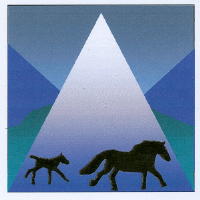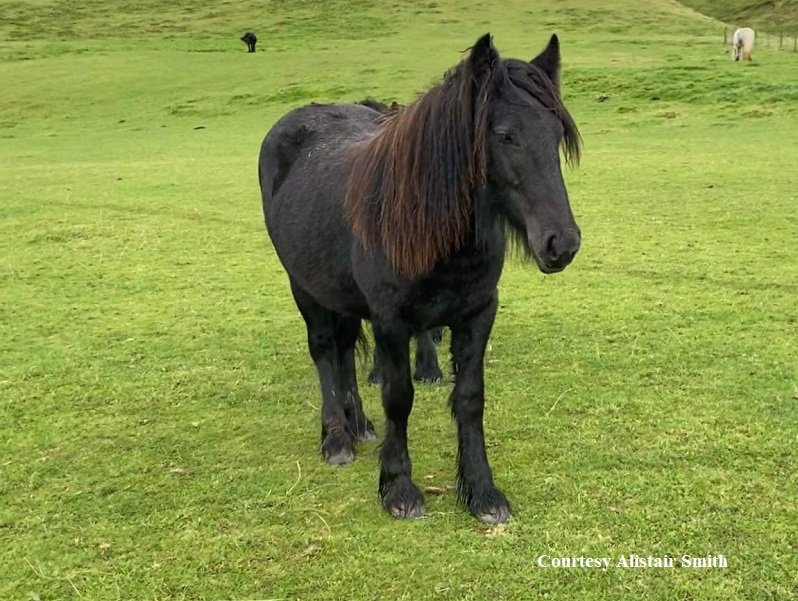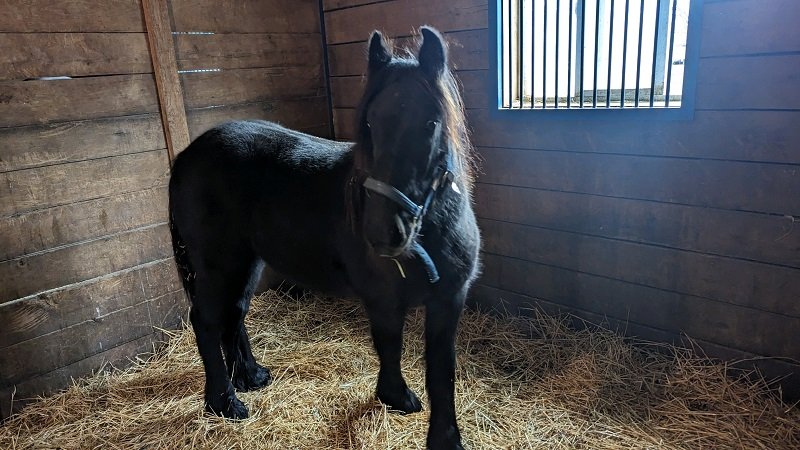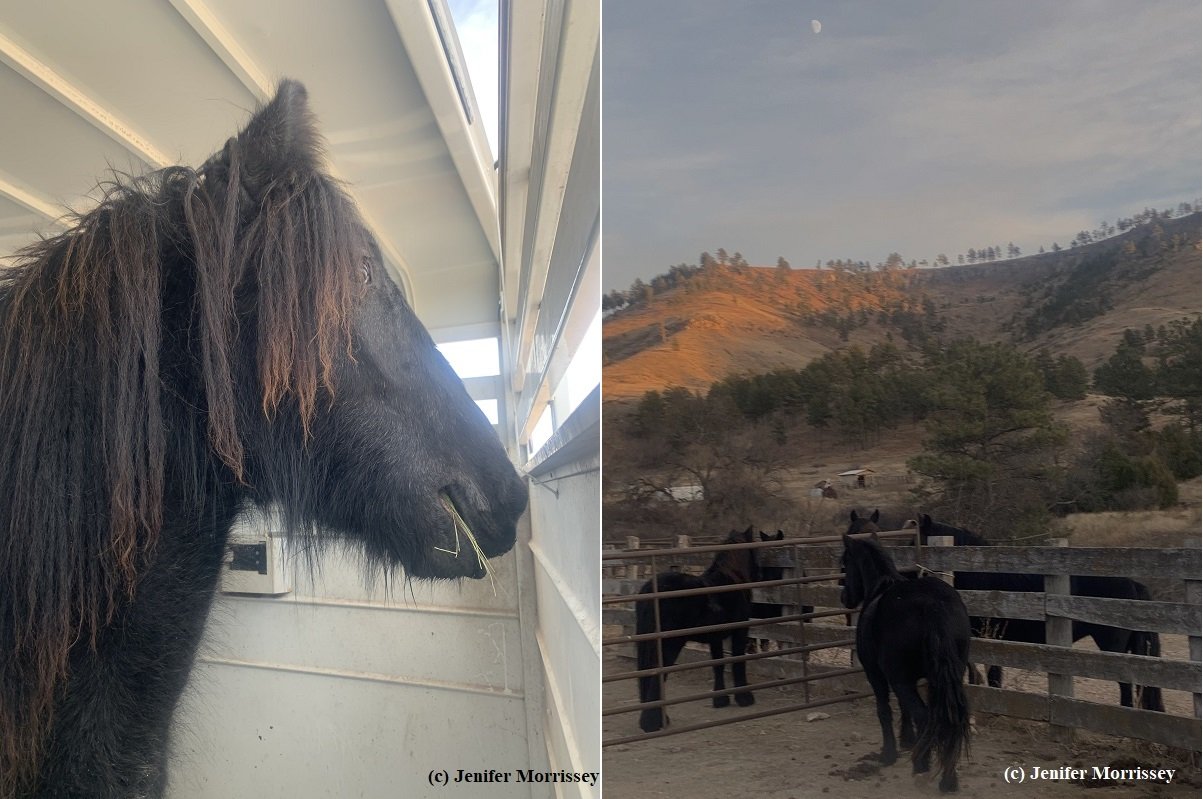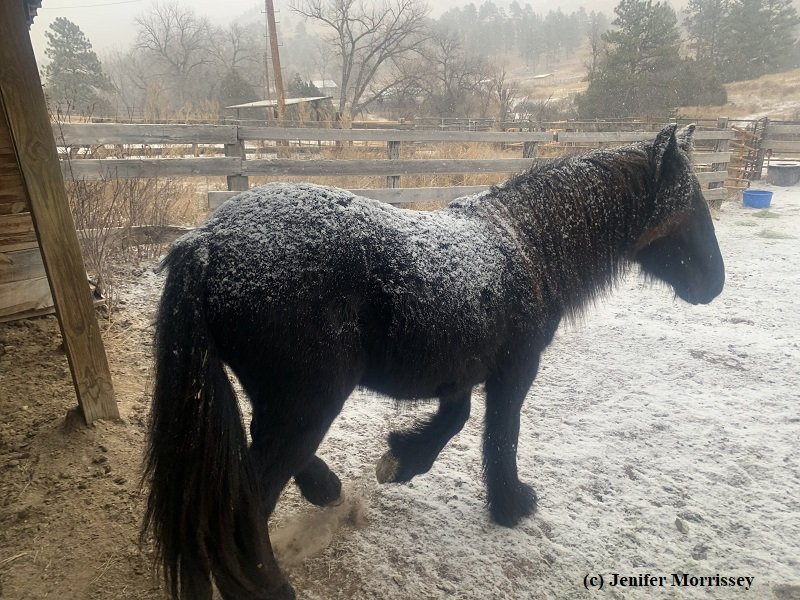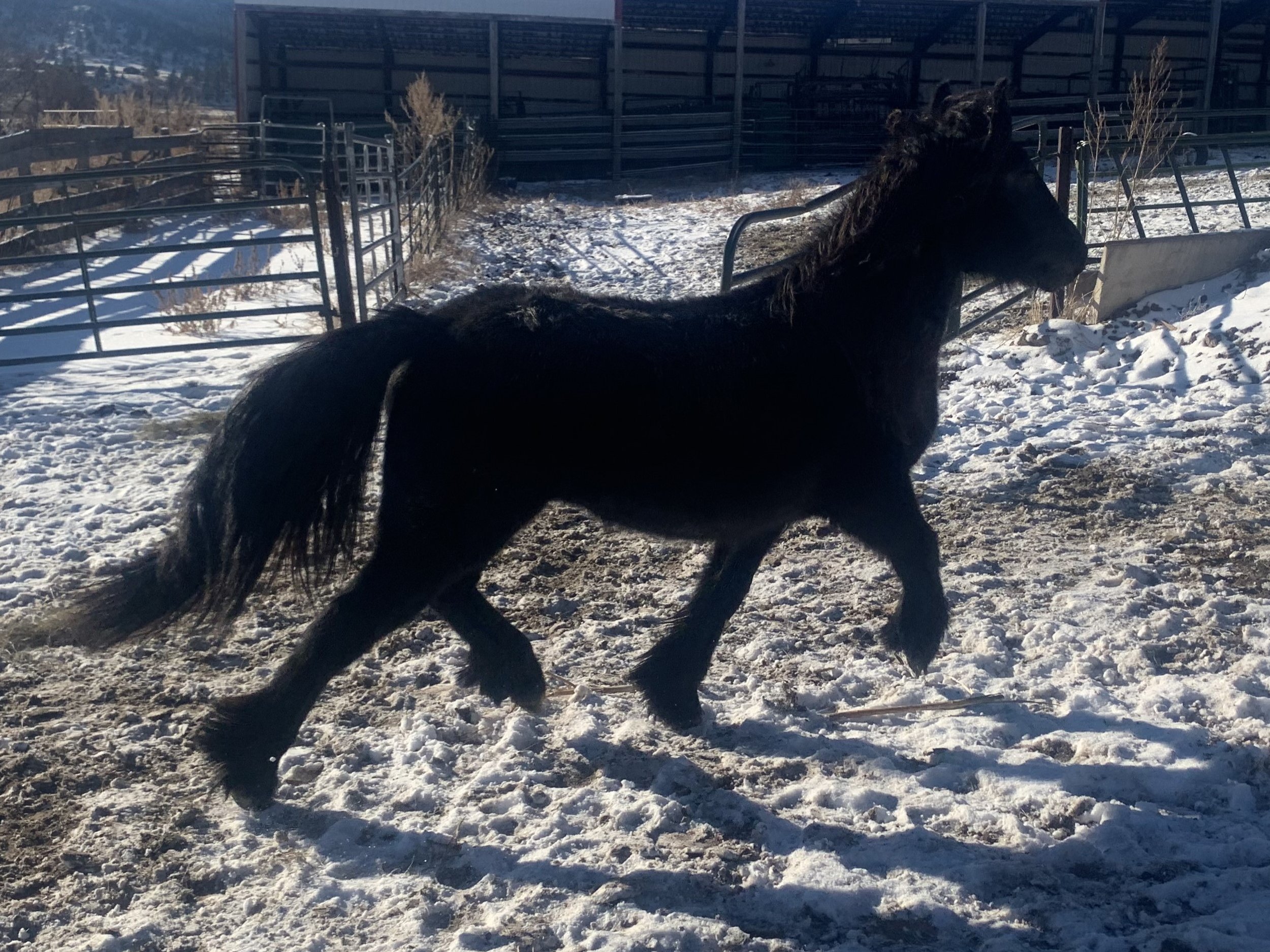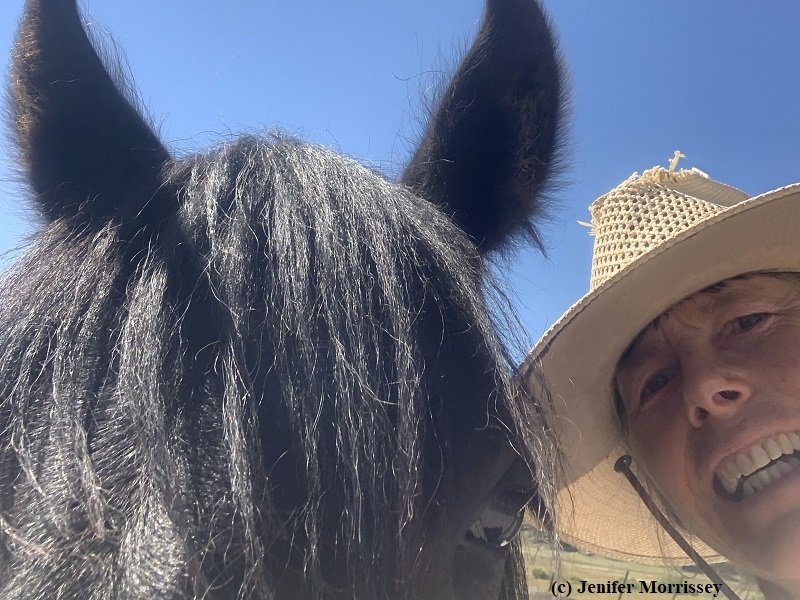Minerals and the Moon
/Many years ago, I read an article by Dr. Doug Hammill, DVM about salt and minerals for equines. (1) His recommendation was for the salt and minerals to be provided loose and free choice: loose because equine tongues are not coarse enough to get what’s needed from a block and free choice to allow the equine to get what they need when they need it. Weather, exercise, change in hay or water all can affect the mineral combinations that equines need.
Providing minerals loose and free choice allows ponies of all ages to get what they need when they need it.
I have always felt fortunate that my first mentor in all things equine told me to provide minerals and salt loose and free choice. Over the years, as I replenish minerals in the various sheds that my ponies use, I have watched how their use of minerals changes. Usually I can pin a change on something, whether it’s a change in weather or a change in feed, for instance. An article in the Stockman Grassfarmer, however, suggested an influence on mineral uptake I hadn’t pondered before.
Joel Salatin, whom you may know for his long work with pastured poultry, had traveled to New Zealand to talk to farmers and stockmen about grazing. In one of his conversations, a stockman pointed out to him that the influence of the moon on mineral uptake isn’t appreciated. That’s definitely something I’ve never considered! The stockman made their observation in the context of plants taking up minerals that grazing animals then take up. The moon is known to influence water, and since many minerals are water-soluble, it makes sense there could be a connection between the moon and mineral uptake by plants and by extension by grazing animals. Here’s another good reason to provide minerals in a way that equines can get what they need when they need it. I certainly can’t keep track of how the moon might influence what they need or don’t!
Hammill, Doug, DVM. “Ask a Teamster,” Small Farmer’s Journal, Fall, Vol. 31, No. 4, page 22.
Salatin, Joel. “Meadow Talk: New Zealand Farmers Montage.” Stockman Grass Farmer, August 2023.
© Jenifer Morrissey, 2023
